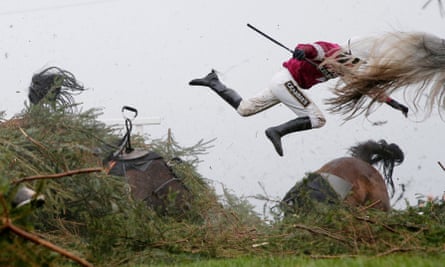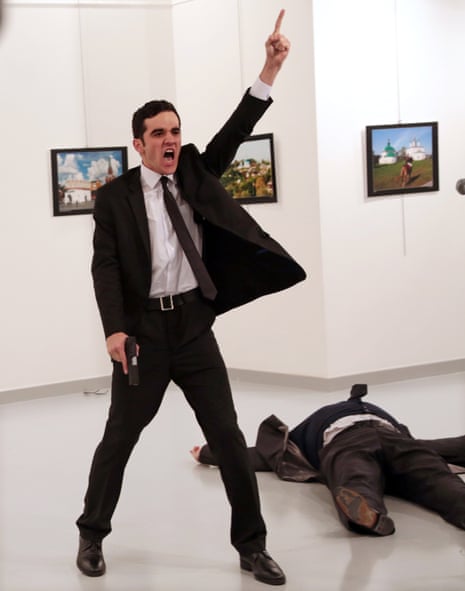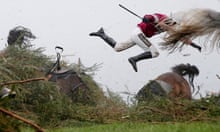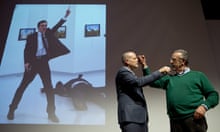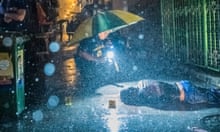On 19 December last year, the Turkish photographer Burhan Özbilici went to a press conference in an Ankara art gallery. He had been on his way home from the office and only attended by chance. As it happened, the event turned into a murderous spectacle when the Russian ambassador to Turkey, who was delivering a speech, was assassinated.
Özbilici had the composure, bravery and skill to take the photograph that is today named World Press Photo of the Year, the judging of which I chaired. It’s the third time that coverage of an assassination has won this prize, the most famous being the killing of a Vietcong suspect, photographed by Eddie Adams in 1968.
Özbilici’s is an impactful photograph, no doubt. Yet, while I was all for awarding it the spot news prize that it also won, I was strongly opposed to it becoming photo of the year. I narrowly lost the argument. I voted against. Sorry, Burhan. It’s a photograph of a murder, the killer and the slain, both seen in the same picture, and morally as problematic to publish as a terrorist beheading.

Unlike the assassination of Archduke Ferdinand in Sarajevo in 1914, the crime had limited political consequences. Placing the photograph on this high pedestal is an invitation to those contemplating such staged spectaculars: it reaffirms the compact between martyrdom and publicity.
This debate’s not new. The Greeks probably started it, nearly two and a half thousand years ago, when Herostratus sought notoriety by torching one of the seven wonders of the world and the judiciary, in response, banned any mention of his name. To be clear, my moral position is not that the well-intentioned photographer should be denied the credit he deserves; rather that I feared we’d be amplifying a terrorist’s message through the additional publicity that the top prize attracts.

Photography is capable of real service to humanity, promoting empathy and initiating change. This image achieves neither, although I’m sorry for the victim’s family and those wounded during his killing. Chairing a jury, such as that for World Press Photo, is all about recognising divergent views and accepting the outcome. What I’d like to celebrate here are some of the other photographs from 2016 that won prizes in their categories.
Each juror’s taste differs. Personally, among the 80,000 pictures we were shown, I looked for an empathetic eye. Photographers go to great lengths, often putting their own lives at risk, to report, to break the silence, and to enlighten us through pictures, because they believe they might, just might, inspire change.

Our role on the jury is to help fulfil the other side of the bargain – and World Press Photo, a charitable foundation, is instrumental in this – to respect photographers’ efforts, to raise the status of photojournalism, and to display it proudly to the world. Exhibitions produced from the prize-winning photographs are held in 45 countries and are seen by 4 million visitors.
Australian photojournalist Daniel Berehulak’s powerful indictment of President Rodrigo Duterte’s merciless anti-drug campaign in the Philippines, documenting 57 homicides in just over a month, is well deserving of first prize in the General News Stories category.
Romanian photographer Vadim Ghirda’s empathic photograph of refugees crossing a fast-flowing river on the border between Greece and Macedonia lends pathos to a challenging event, echoing work we’d seen from the crisis in the Mediterranean. Laurent Van der Stockt deserves a mention for his striking image of a family caught in the grip of conflict in Iraq. It won first prize in the General News Singles. Ameer al-Halbi (not his real name), a 21-year-old Syrian photographer contracted to Agence France Presse (AFP), deserves respect for his courage in documenting the relentless bombing of Aleppo last year, up until the photographer was forced to flee the Bustan al-Qasr district in December. And New Orleans based Jonathan Bachman, first prize winner in the Contemporary Issues category, is worth a mention for his unforgettable picture of passive resistance.
While the human cost of conflict is uppermost in most people’s minds, the jury was drawn to tragedy of a different sort. South African photographer Brent Stirton submitted a magisterially depressing photograph of a slaughtered black rhino, part of a series on his country’s “rhino war”, earning him first prize in the nature stories category.
“You get one chance to get it right and then it’s gone,” wrote Guardian sports photographer Tom Jenkins, echoing the psychological angst Wim Wenders exploited in his classic 1972 film The Goalkeeper’s Fear of the Penalty. I applaud Jenkins’s virtuosity in winning first prize in the Sports Singles category, in an Olympics year, with his photograph of Irish jockey Nina Carberry’s horse Sir Des Champs careering into the ditch during the 2016 Grand National.
Burhan Özbilici, an Associated Press staffer from a country where press freedom is constantly under assault, also had one chance. He did his job heroically that evening in Ankara. That’s not in question. But what is controversial is that an image depicting a premeditated murder, staged at a press conference to maximise publicity, is World Press Photo of the Year.
